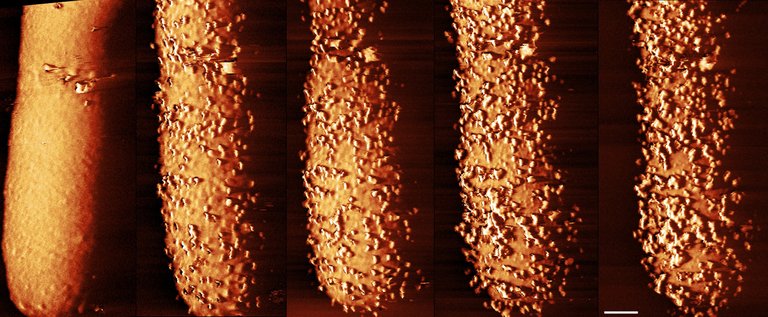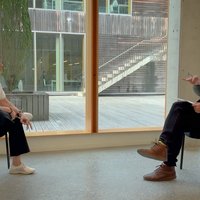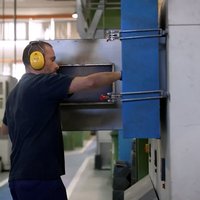They see how an antibiotic violates the armor of the bacteria

The figure above shows how the antibiotic polymyxin destroys the armor of E. coli bacteria. Researchers at University College London and Imperial College London have been able to see how this happens for the first time using atomic force microscopy. By passing a needle a few nanometers wide through the surface of the bacteria, they have obtained images of much higher resolution than would be possible using light. These images have shown that polymyxin produces a series of protuberances on the bacterial surface in a matter of minutes.
Polymyxins are used as a last resort treatment to combat multi-resistant Gram-negative bacteria when other antibiotics fail. Gram-negative bacteria have an outer membrane that acts as an armor. Polymyxins target this outer membrane, but their mode of action was unknown. This has been elucidated in this study through microscopic imaging and other biochemical experiments.
They observed that minutes after the appearance of the protuberances, the bacterium begins to renew the outer membrane. The antibiotic initiates the process of initiating the renewal of the defensive wall of the bacterium, but in this process the bacterium leaves voids in this defensive wall, through which the antibiotic penetrates and kills the bacterium.
However, researchers have found that this process occurs only in bacteria that are active and not in lethargy or lethargy.This was a surprising finding, as it was believed that antibiotics that attack the skin of bacteria could work in any situation, even in the case of dormant bacteria. But, this study has shown that no, this type of antibiotic only works with the help of the bacteria. However, they have found that to combat this it is enough to supply sugar to the bacteria, which makes them fall out of lethargy. When sugar was introduced, the antibiotic was also able to kill previously inactive bacteria with a delay of 15 minutes.
Now, the next challenge is to use these latest findings to make antibiotics more effective. Researchers have anticipated that one strategy could be to combine the treatment of polymyxin with treatments that promote the production of the outer membrane, and/or to awaken dormant bacteria so that these cells can also be eliminated.
Buletina
Bidali zure helbide elektronikoa eta jaso asteroko buletina zure sarrera-ontzian










